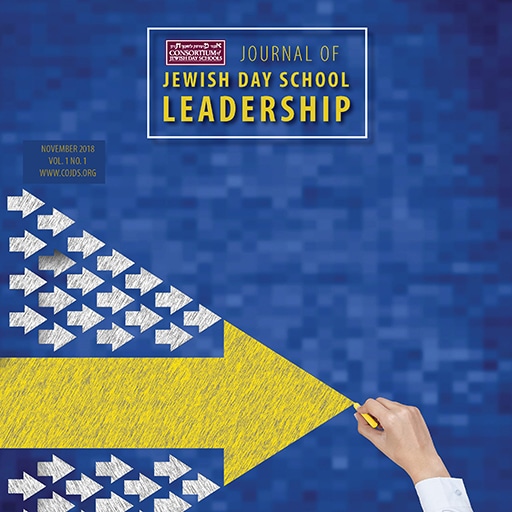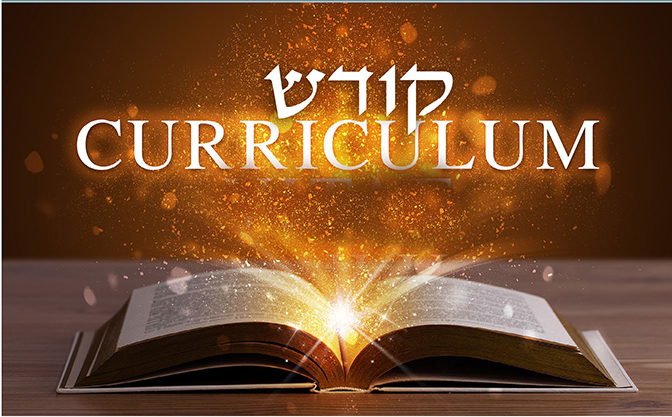
Seeking Submissions
January 3, 2022
CoJDS’ Curriculum Development–A Closer Look
January 17, 2022by Mrs. Sharon Schwartz and Mrs. Esther Kirschbaum
Walk into a developmentally appropriate classroom and the first thing you notice is the hum of engaged children involved in a multitude of activities. Look carefully and you will spot a teacher sitting on the floor with a group of children who are eagerly describing the matzah oven they built in the block area. Go closer and hear the questions she asks them to promote higher level thinking. Look around some more and you will spot another teacher working with a small group of children in the dramatic play area. They are busily covering shelves in the toy refrigerator with paper. They are cutting and measuring and taping as they discuss how to make their kitchen kosher for Pesach. They have already sorted through the food and put away everything that is chametz. The children will soon design “Kosher L’Pesach” signs for the refrigerator door, sounding out the letters as they go.
Another small group works independently at a table making texture rubbings with various items and papers. As you approach you will hear them discussing which rubbings will make the best matzot to place on the Motzi Matzah page in their haggadot. The children negotiate whether they should cut the paper matzot into circles or squares. At the science table another group of children compare flour and potato starch. Still others are playing “Tic Tac Dough” in the manipulative center. Situated at the art center, another group is designing unique covers for their haggadot while others, in the classroom library, look through books about Pesach. Everywhere you turn in this classroom children are exploring and discovering, learning, and growing.
Curricula in early childhood education must address the developmental needs of the whole child in every domain. Planning for a classroom like the one described above requires a deep understanding of how young children learn. Children’s social, emotional, sensory, and intellectual cognitions are all addressed, nurtured, and enhanced with the application of an appropriately designed curriculum.
How Do Young Children Learn?
Young children spend most of their waking hours trying to make sense of the world. As they interact with their environment, they form understandings of how things work and what they mean. Modern brain research informs us that when learning is relevant and meaningful, the brain makes associations, allowing it to create constructs of knowledge. Similarly, the brain resists meaningless patterns imposed upon it. Young children learn best through active, sensory-based exploration while engaging in purposeful experiences using real materials. For example, a child will learn and retain much more about the shofar when given the opportunity to see a real shofar and examine it with her senses, feel it, smell it, and of course, hear its mighty sound. Compare these rich experiences with coloring in a picture of a pre-drawn shofar or lacing a cardboard cutout of a shofar. Similarly, a child will form strong brain connections when helping to prepare real latkes in the classroom rather than creating a paper “latke man” with moveable arms and legs.
When designing curricula for young children, it is imperative to focus on ways to maximize learning. Opportunities must be provided that will benefit children’s growth in all the developmental domains and resist the temptation to engage in projects simply because they are ‘cute’. Early educators need to get into the practice of looking at curriculum through the lens of “What will the children be learning?” instead of “How impressive will this look to the parents?” With education and clear, respectful communication, parents focus less on ‘cute projects’ and appreciate more all that their children are learning.
Considerations for Curriculum Development
Curriculum development for early childhood must begin with the premise that young children are concrete learners and learn best when they are actively involved in experiences that are personally relevant to them. Abstract concepts are best left for older grades. Worksheets and coloring book pages lack the richness of hands-on activities and are, at best, only minimally effective. Frontal teaching and teacher demonstrations have been shown to produce poor results with young children.
Instead, a robust curriculum that represents best practices will include a multitude of hands-on experiences. It will include activities that are scaffolded and intentional. Children will have space to explore and discover, to solve problems and figure things out for themselves. Choice and individuality will be encouraged. Opportunities will be provided for children to express their understanding of the world through open ended art experiences where children are not required to copy a teacher’s model. Children will be encouraged to work in small groups and will be able to return to the same activity over and over until they are satisfied that they have achieved mastery.
Additionally, an excellent early childhood curriculum is designed to accommodate children at different developmental stages. Instead of asking children to complete the same worksheet, which will inevitably be too hard for some and too easy for others, children are provided with open ended materials and choice. In this way, children at all stages can be successful, and an expert teacher can scaffold to help each child achieve her absolute best.
Educators must always remember that children learn through a multitude of differing modalities. Some children are auditory learners and some visual. Some learn through stories and others through song. Many young children are kinesthetic learners and find meaning through movement and whole-body experiences. An excellent curriculum will cater to all types of learners.
Research has shown that actual social context provides young children with important learning experiences. Interacting with peers in small groups helps children gain new understandings and skills. Additionally, working in small groups in self chosen interest or learning centers, accommodates the quieter child who hesitates to speak up in a large group context.
If the culture of the school allows, the ideal way to teach young children is to integrate the kodesh and the chol. The general studies content areas, including literacy, math, and science, come to life when they are integrated into the Jewish concepts and practices that are so meaningful to the children. For example, sorting and classifying different types of dreidels is much more relevant around Chanukah time than sorting and classifying plastic bears. As the month of Nissan approaches, exploring the process by which bread is baked from wheat to the table makes so much more sense to the children than using that time to learn about community helpers. With proper planning and appropriate staffing, the secular content areas will not only complement the Jewish themes being studied but will help children deepen their understanding of them.
Planning a Developmentally Appropriate Limudei Kodesh Curriculum
Of course, the main message that we want our youngest learners to internalize is ashreinu mah tov chelkainu. Everything that is done in the classroom, every experience given to the children, every story told, every song that is sung, is a way to help the children develop a deep, instinctual love for Torah and mitzvot. Early educators are laying an especially important foundation for their student’s future where, even as adults, they will bring Hashem into every facet of their lives and feel His all-abiding love for them.
Chagim
The chagim are exciting for young children. Each one comes with its own unique flavor ready to be savored and enjoyed. A good deal of thought needs to be put into the teaching of each chag to young children. The first consideration to think about is what is the essence of the chag and if there is any way to make that meaningful to our youngest learners who are concrete thinkers. The more abstract parts of the chag are best left for the older grades.
For example, on Rosh Hashanah, the concept of Hashem judging the world is hard for young children to comprehend. However, the youngest learners can easily understand that we dip an apple in honey to ask Hashem for a sweet new year. This is especially true if the children are given the opportunity to examine apples from peel to core, as well as the chance to taste various foods that are sour, bitter, and salty as well as sweet. Children can design honey dishes that can be used at the Yom Tov table, but they should be as unique as each child and reflect her personal aesthetic sense. Teachers can easily give children a choice of containers and a choice of decorations. Children can then start off the year with the understanding that their teacher appreciates them as individuals and allows them to successfully execute a holiday project without fear of failure. Instead of being required to follow a teacher’s model, each child is encouraged to use open ended materials to work at her own ability level.
Parsha
Even young children can understand that Hashem gave us the precious gift of the Torah and we read and learn some of it each week. Early educators need to carefully consider the children’s developmental stage and abilities when planning a parsha curriculum. Since young children learn best through hands-on meaningful activity, the typical parsha coloring book page is not the best choice for maximizing learning and understanding. Similarly, the traditional teacher directed “parsha project” is often not the ideal way to meet young children’s developmental needs.
Instead, early educators must endeavor to find ways to bring the stories of the Torah to life for their young charges. A real brick that children can examine and try to lift up will help them understand the experiences of the Jewish slaves in Egypt in a way that no coloring sheet can achieve. A full-sized tent constructed of sheets and fabric with four entrances will make the story of Avraham real, especially when children can dress up in period clothing and reenact the parsha story.
Mitzvot
Curriculum for young children often includes mitzvot like Shabbat and brachot. Educators of young children must be careful to present all mitzvot in a positive, pleasurable manner. The emphasis should be on what we can do, not on what we can’t. For example, children should be encouraged to think about what they can do on Shabbat and what is pleasurable about Shabbat.
Mitzvot should be taught in the most concrete, relevant manner possible. When learning about brachot, for example, the children can prepare foods from each bracha category from scratch. This will help them understand what various foods contain and why we make specific brachot on each one. Field trips to a local fruit tree or planting a children’s vegetable garden will make distinctions between food quite clear. Older children can categorize toy foods according to their brachot in the classroom Drama Center. It turns clean up time into a daily educational experience.
Tefillah
Young children have a limited ability to sit in one place, especially when they are asked to do something that they don’t fully understand. It is a true disservice to our youngest learners to expect them to sit for extended periods of time for tefillah each morning. Unrealistic expectations lead to behavior problems at best and a long-lasting dislike for tefillah at worst.
Instead, the tefillah curriculum should be carefully constructed to meet children’s developmental abilities. The youngest children should be expected to say only a few basic tefillot. Care should be taken to explain the meaning and purpose of each tefillah. Attention should also be given to proper pronunciation. As the children’s abilities develop, more tefillot can be gradually added.
It must be made clear to early educators that the goal is not to be the teacher who can teach the most tefillot in a year. Instead, the goal is to promote a genuine enjoyment and understanding of tefillah, along with proper pronunciation and respectful and enthusiastic decorum.
Alef Bet and Ivrit
A good deal of research shows the benefits of language immersion. Ideally, children should be able to speak and understand Hebrew before learning how to read it. However, in many situations, this is not practical or desirable for a particular school. Instead, children learn how to read Hebrew long before they can comprehend what they are reading.
In this situation, it is important to make Alef-Bet as relevant to children as possible. Children who are fortunate to come from observant homes may be somewhat familiar with the appearance of Hebrew print that they see in the many Hebrew books in the home. Nonetheless, it is asking a lot of young children to learn an alphabet that seems very far from their daily lives.
One of the best ways to make Alef-Bet letters meaningful to children is to connect it to their names. Since children’s names bear significant meaning to each child, seeing them written in Hebrew opens many opportunities for making connections to Alef-Bet. Letters that are not found on the class roster of Hebrew names can be connected to familiar objects, middot and mitzvot. Care should be taken to introduce these reference words long before referring to them in the context of the Alef-Bet so that children are fully familiar with them and can use the words in a natural way.
Middot Tovot
No limudei kodesh curriculum is complete without a discussion about instilling middot tovot and Torah values into our youngest learners. It is crucial that content and values be transmitted with meaningful, authentic activities and experiences.
Teachers can actively seek real-time classroom examples of the values they seek to transmit. When a child helps a friend, that is a perfect opportunity to discuss ve’ahavta l’rayacha kamocha. When a child returns her classmate’s lost keychain, children can learn about hashavat aveida. Every time these behaviors repeat, the teacher can reinforce them, simply by pointing them out. She can even photograph them and create a class book showing the children themselves doing the mitzvah. She can add the name of the mitzvah in Hebrew under the photograph along with dictation describing the scenario. Pages can be added whenever appropriate. It is guaranteed to be a favorite book in the classroom library.
A savvy teacher can even set up opportunities for the children to actively practice the mitzvot and middot she wants to encourage. If the children are learning the mitzvah of hachnasat orchim, the teacher can orchestrate a situation where the children suggest the idea of inviting an underappreciated staff member to be their class guest. The children can plan out the whole experience with the teacher acting as facilitator. They can decide what to do to make the guest comfortable. They can plan out what to serve, how to decorate and how to entertain the guest. The children can work together in small groups to execute their plan. With the overwhelming sense of pride that the children enjoy, a strong cognitive and emotional bond has been formed with the mitzvah of hachnasat orchim. Experiences like this require a lot of time and planning; however the enduring results are priceless.
Conclusion
An excellent, developmentally appropriate limudei kodesh early-childhood curriculum is based on the understanding that young children acquire knowledge through hands-on activities that are meaningful and relevant to their lives. They need to be engaged through their senses and given opportunities to explore and discover, to make choices and to problem solve. Learning must target all developmental domains: social, emotional, cognitive, and physical. Educational activities and projects need to be chosen with care to engage the heart and teach the mind. Most importantly, the curriculum must be driven by the desire to generate a love of Torah and mitzvot and a strong unyielding belief that Hashem has an important place in each child’s life.
References:
Burnett, S. M. (2010). Substantiating Constructivism from a Brain-based Perspective. The International Journal of Interdisciplinary Social Sciences: Annual Review, 5(4), 145–154. DOI: 10.18848/1833-1882/cgp/v05i04/51660
Darling-Hammond, L., Flook, L., Cook-Harvey, C., Barron, B., & Osher, D. (2019). Implications for educational practice of the science of learning and development. Applied Developmental Science, 1–44. DOI: 10.1080/10888691.2018.1537791
Eun, B. (2010). From learning to development: A sociocultural approach to instruction. Cambridge Journal of Education, 40(4), 401-418.
Gardner, H. (2006). Multiple intelligences: New horizons (Rev. ed.). Basic Books.
NAEYC. (2020). Developmentally appropriate practice in early childhood programs serving children from birth through age 8 [Position statement]. https://www.naeyc.org/resources/position-statements/dap/contents
What the research says about immersion. (n.d.). Center For Advanced Research on Language Acquisition. Retrieved January 31, 2021, from https://carla.umn.edu/immersion/documents/ImmersionResearch_TaraFortune.html
Willis, J. (2008). Building a Bridge from Neuroscience to the Classroom. Phi Delta Kappan, 89(6), 424–427. DOI: 10.1177/003172170808900608
Esther Kirschbaum is Director of Early Childhood at Shulamith School for Girls in the Five Towns. Prior to becoming early childhood director at Shulamith, Esther was the early childhood director at Bais Yaakov of Queens for over twenty-five years. She was on staff at Stern College for Women teaching a course in education. Esther has presented professional development workshops to directors and teachers on a wide range of topics related to the field of early childhood for over thirty years. Contact Mrs. Esther Kirschbaum at [email protected].
Sharon Schwartz is Curriculum Coordinator at Shulamith School Early Childhood Center. She teaches prospective early childhood teachers and special educators at Sarah Schenirer/ College of Mount Saint Vincent and presents workshops across the tri-state area to help Jewish early childhood teachers reach and teach their young charges. Previously, Sharon spent nearly 30 years as an early childhood classroom teacher which gave her many wonderful hands- on opportunities to research and implement developmentally appropriate practice for young children. Contact Mrs. Schwartz at [email protected].

